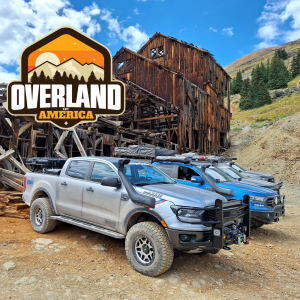The engineers with their computers and test tracks are very good at figuring it out.
In too many cases the engineers are just good at figuring out how to pass the test with the best marks (VM & RAM dieselgates, EPA fuel economy numbers, etc).
And I'm going to have to correct a couple of my previous statements as I have learned more.
F-150 Max Towing is achieved with the medium (6.5') SuperCrew 4x2. And it can probably be a Lariat trim model.
To get best "grade" on the SAE J2807, you need largest delta between GCWR and GVWR. Ford rates the 3.5EB SuperCrew 6' box 4x2 with the highest GCWR. Then they pick a GVWR which barely meets the payload requirement (10% of trailer, Driver and passenger, and WD hitch).
Given the SCrew weighs slightly <5k empty, payload at F-150s highest rating is ~1.7k & the min GVWR for the SCrew is 7k. Therefore, you have ~300lbs available for options. Might as well use a Lariat trim, otherwise you just have to ballast anyways.
As Ford rates the Regular cab Long box almost 1,500lbs less in GCWR, it tows less under the test. Even with lightest payload, RCLB Lariat needs ballast. And the F-150 with large payload package tows an even less due to additional ballast.
Bringing it back to Ranger's:
Based on the RoW Ranger's 13.2k lb GCWR & the announced 7.4k lb trailer max, you may very well be able to get a SCrew Lariat Ranger for the job. It is not guaranteed to be the highest GVWR truck though (Too high GVWR would hurt trailer tow numbers).
Again, which of SCab or SCrew Ranger XL has highest payload will depend on how the max GVWR for the 2 models is rated. Ford certainly plays with GVWR between the F-150 models to get the numbers they want.




 I also read the Ford GT uses the same 3.5 block as the F-150, and I haven't heard of any issues with those either, but I'm sure they aren't driven much.
I also read the Ford GT uses the same 3.5 block as the F-150, and I haven't heard of any issues with those either, but I'm sure they aren't driven much. 















